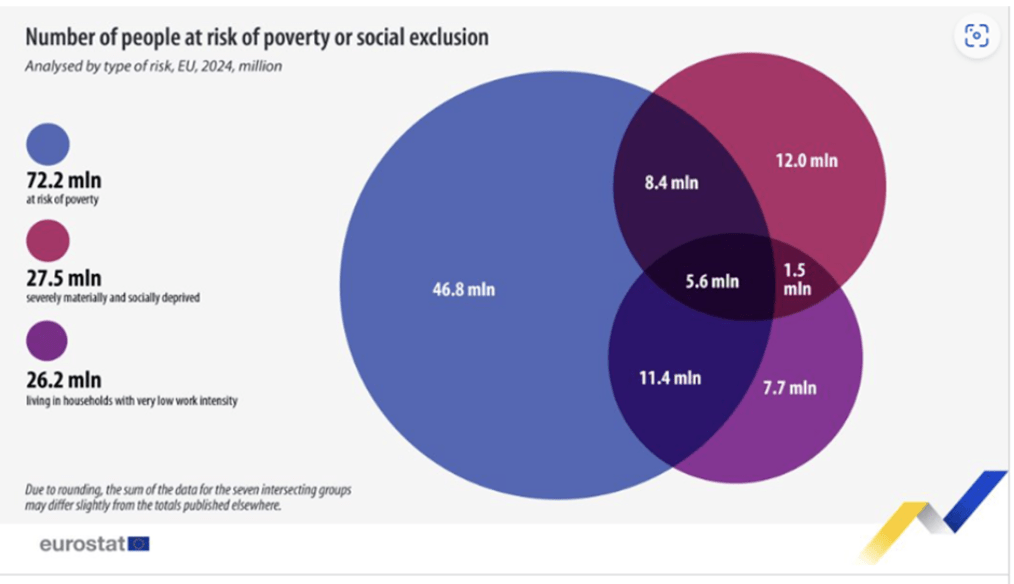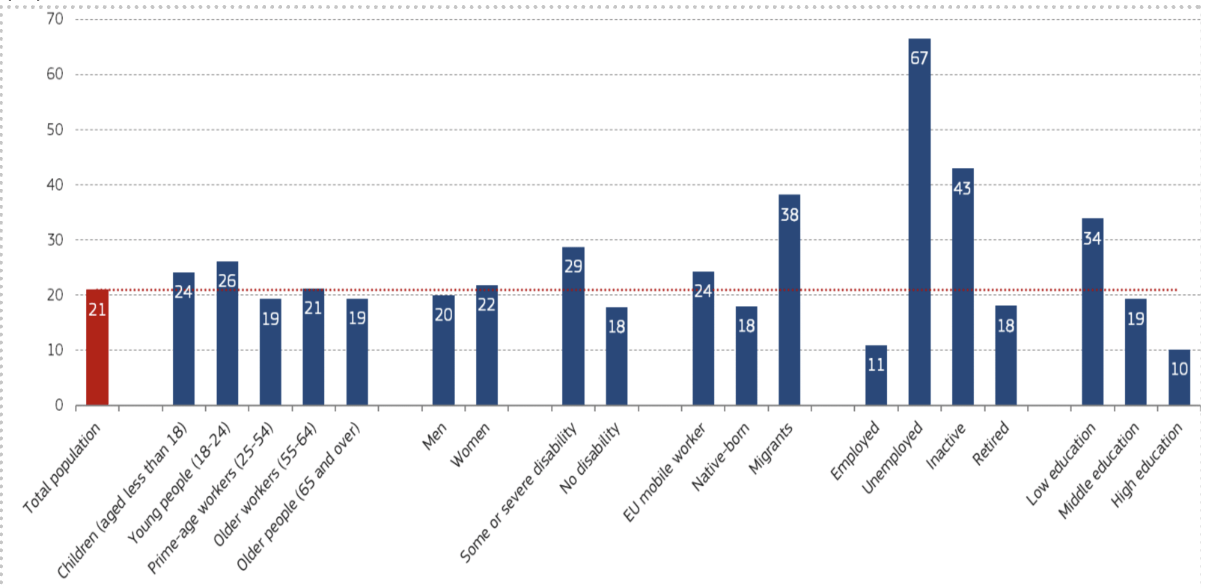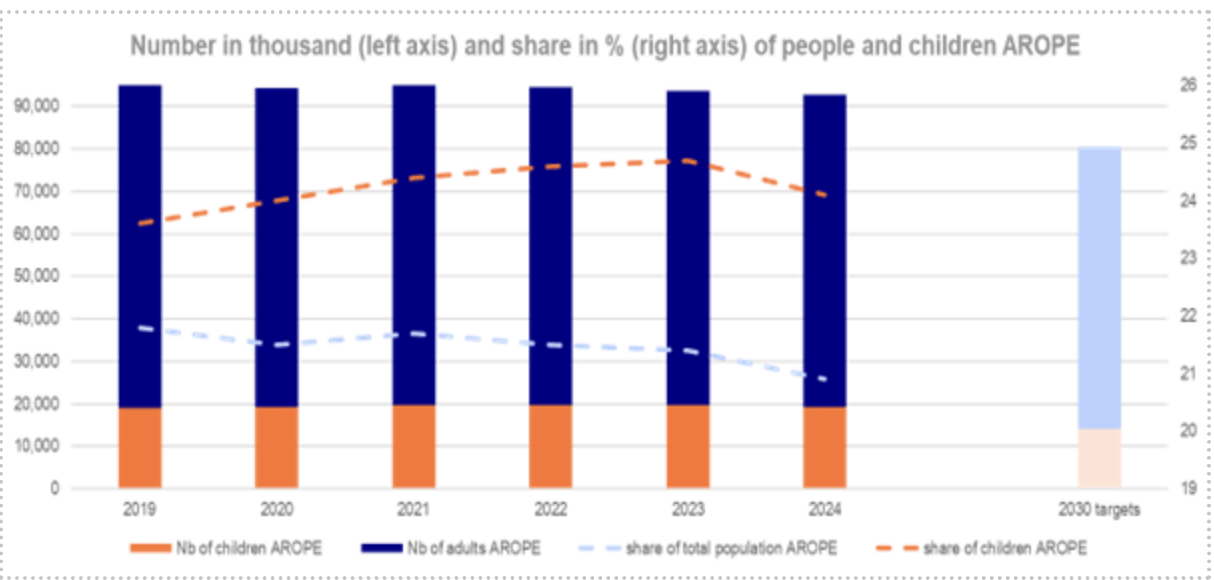Towards Eradicating Poverty in Europe: the EU Anti-Poverty Strategy
Unlocking the potential of all EU citizens is not only a social imperative—it is an economic necessity if we want the EU to remain globally competitive. A commentary by Mario Nava, Director-General, DG Employment, Social Affairs and Inclusion of the European Commission

Mario Nava, Director-General, DG Employment, Social Affairs and Inclusion of the European Commission, was one of the main speakers at the event “The EU’s Anti-Poverty Strategy: An Evaluation and Next Steps,” co-organised by the Institute for European Policymaking at Bocconi and the European Commission, on October 20 at Bocconi University in Milan.
With the upcoming first ever EU Anti-Poverty Strategy, the EU can improve the lives of millions of people who are today still living in conditions of precarity.
“Poverty is not created by the poor, but by the system we have built. It is our responsibility to rebuild the system, to put people and the planet first”, said Muhammad Yunus, Chief Adviser of Bangladesh and Nobel laureate. The EU is working on exactly this: rebuilding its systems to help eradicating poverty.
The need for a common strategy is evident. Across the EU, millions of people continue to live in conditions of precarity: not being able to afford essential items like food or clothing, not being able to keep their homes warm, not being able to pay for transport, or not being able to access quality jobs.
Why Europe needs an Anti-Poverty Strategy
The EU has the best social market economy, striving for sustainable and inclusive growth. However, the underlying assumption of bridging equal opportunities for all and protecting our planet did not materialise. On the contrary, we observe negative externalities, and poverty is a clear example.
Concretely, around 93 million Europeans (one in five) are at risk of poverty or social exclusion. Among these, the rate of children living in poverty or social exclusion is even higher, around 19 million (one in four). In 2024, 14 million people – that is around 3% of the EU population, living in severe forms of material poverty.
Figure 1 – number of people at risk of poverty or social exclusion by type of risk, EU, 2024

Some groups are more at risk, such as children, the unemployed, persons outside of the labour market, women, people with low formal education, persons with disabilities, and migrants.
Figure 2 – At-risk-of-poverty or social exclusion (AROPE) rates by socio-demographic characteristic (%), EU, 2024

Source: Eurostat.
Over recent years, poverty has slightly decreased: in 2024, around 2.7 million fewer people were at risk of poverty or social exclusion compared to 2019.
This progress demonstrates that coordinated policies at EU and national levels can make a difference. Despite the COVID-19 pandemic and the recent cost-of-living crisis, we have seen resilience and partial recovery. This is different from the previous decade, when the financial crisis caused a sharp rise in poverty and exclusion.
However, progress has been uneven, and child poverty has even increased slightly: in 2024, 250,000 more children were at risk of poverty than in 2019. These numbers remind us that we must intensify the fight against poverty.
Figure 3 – Incidence of poverty in the EU

Source: Source: Eurostat (ilc_PECS01), break in time series in 2020
Achieving EU targets on poverty reduction
We have an opportunity to change this reality. The EU and the Member States have set clear objectives for the years to come.
By 2030, we want to help at least 15 million people leave poverty behind, including at least 5 million children. This means:
- Moving from 93 million people to 78 million at risk of poverty or social exclusion in the EU.
And moving from 19.3 million children to 14 million.
By 2050, we want to help eradicate the most severe forms of poverty in the EU. This goes hand in hand with another EU 2050 target: to become a climate-neutral continent.
To achieve these goals, the EU is now working on its first-ever Anti-Poverty Strategy. Announced by President Ursula von der Leyen in 2024, it will help people access essential protection and services, while addressing the root causes of poverty.
Key elements of a new strategy to step up the fight against poverty
Fighting poverty is first and foremost about safeguarding dignity.
Some aspects of the strategy are already clear: to ensure access to work, housing, and food. Access to services, tackling energy and transport poverty and ensuring financial and digital inclusion are equally relevant.
Poverty can happen at different stages of life and considering the rise in the cost-of-living, traditional and new groups are at risk of falling into poverty. The strategy will focus both on preventing poverty and on supporting people to leave poverty behind.
By reducing inequalities, the strategy will address the root causes of poverty. It will tackle poverty throughout the life cycle and at the same time target specific groups of populations which are particularly at risk.
The Strategy will also reinforce the progress made through existing initiatives, for example the European Child Guarantee and the Council Recommendation on minimum income ensuring active inclusion, which are already and significantly contributing to the reduction of the number of people at risk of poverty or social exclusion. To step up the efforts on all the levels, new instruments will also be considered.
Addressing poverty is an investment
Chief Adviser Yunus’ work successfully demonstrated that access to micro-finance and social business allows the most disadvantaged to exploit their full potential and creativity, so that they can change their fates.
Unlocking the potential of all EU citizens is not only a social imperative—it is an economic necessity if we want the EU to remain globally competitive.
The OECD estimates that the yearly cost of child disadvantages amounts to 3.4% of GDP on average in the EU, due to their negative impact on children’s future prospects in life, especially in terms of employment and health.
This is why the EU Anti-Poverty Strategy will have a strong economic rationale, underpinned by the social investment perspective.
Finally, tackling poverty is crucial for the stability of our democracies. Reducing inequalities and ensuring equal access to opportunities strengthens citizens’ trust in institutions.
Developing policy for people, with people
The European Commission will present the EU Anti-Poverty Strategy in 2026, following a broad consultation process that reflects the diversity of experiences across Member States.
A public consultation, open until 24 October 2025, invites citizens, organisations, and institutions to share their insights and proposals. This participatory process will be essential to ensure that the strategy reflects real needs and builds on proven solutions.
One aspect is clear: eradicating poverty requires the mobilisation of all levels of governance – the European, national, regional and local levels – and of every part of society from civil society to companies, from academia to policy makers.
The Commission has launched a call for evidence as part of drafting the EU’s first-ever Anti-poverty Strategy. Submissions will be considered to develop and refine the initiative.
IEP@BU does not express opinions of its own. The opinions expressed in this publication are those of the authors. Any errors or omissions are the responsibility of the authors.
